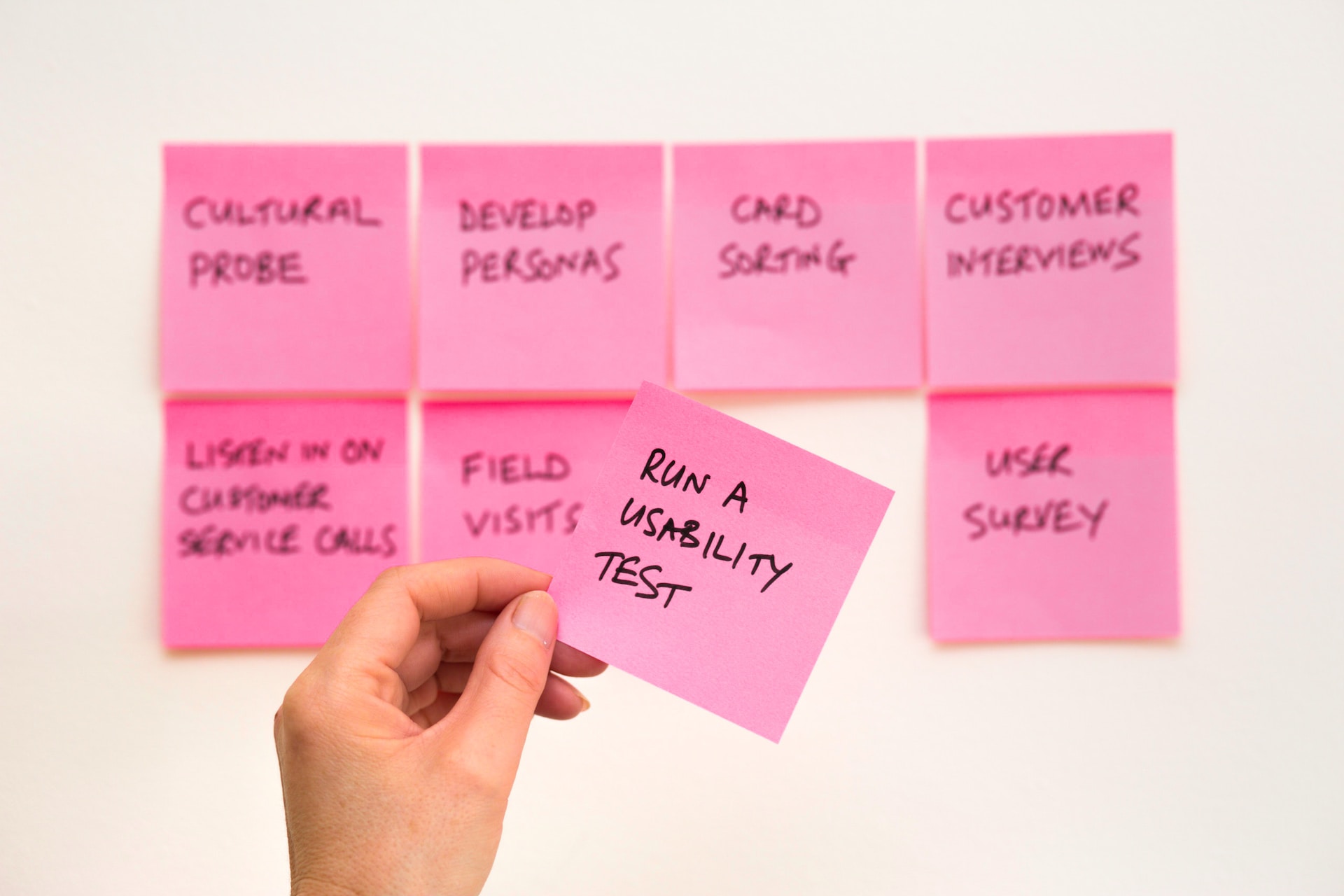eLearning courses have exploded in popularity within higher education over the last decade. Whilst part of this can be attributed to the COVID-19 pandemic and its “long shadow,” a more significant factor has been the utilisation of emerging technologies and high-speed internet to deliver information and interactive educational experiences via the web.
We learn differently in 2023, and amongst the 16-54 age demographic in the United Kingdom, over a third of learners note that watching online videos is their preferred way to study. Online classes are 360% more popular than they were in 2019, particularly for technical subjects such as software engineering, data analysis, and web development.
In this guide, we’re going to explore the fundamentals of eLearning design and development—as well as offer our guidance on how to make eLearning engaging—before we provide our top five quick-fire tips on how to design an eLearning course that motivates and inspires students.
The Fundamentals of eLearning Design and Development
All segments of the eLearning market are expected to experience growth within the next three years. Online and mobile eLearning courses will, understandably, take the greatest proportion of this market share across the globe, with online learning anticipated to grow by $66bn and mobile eLearning expected to expand by a further $29bn over this time period.
If you’re interested in learning more about how eLearning is reshaping higher education, see our handy guide to the topic after you’ve read this article to explore how emerging technologies are having a positive impact on learners and educators in 2023.
Sixteen to twenty-four-year-olds make up the greatest demographic of eLearning students within the UK, with almost double the number of active online learners as the next age bracket of twenty-five to thirty-four-year-olds. As one of the most impacted age groups when it comes to the loss of learning as a result of the COVID-19 pandemic, this highlights the significance of laying the proper groundwork when researching how to design an eLearning course.
There are a handful of principles which underpin eLearning design and development, and it’s vital that you keep these in mind when you’re aiming to create an engaging and informative course.
1. Instructional Design is Crucial in Effective eLearning Courses
A systematic approach to crafting effective and valuable learning experiences, instructional design is fundamental to creating eLearning courses. Gathering information about learners and their goals, and designing a comprehensive plan based on the curriculum is crucial to ensure that all content covered is relevant and effective.
Alongside this, a core aspect of instructional design is a willingness to evaluate and return to the drawing board in the case of unsatisfactory results. Whilst the average eLearning design phase can last anywhere from 43 hours to 716 hours, depending on the complexity of the project, it’s often wise to overestimate—storyboarding just 15 minutes of multimedia content for an eLearning course can take as long as 8 hours.
Make sure you’ve got the right people in place, and that you aren’t overcomplicating factors by incorporating experts in project management as internal stakeholders.
2. Universal Design Ensures the Success of Online Learning Initiatives
According to research gathered on behalf of the House of Commons Library, the number of students with a disability has increased by 47% over the last decade.
Regardless of their abilities, all learners should have equal access to education. By implementing the principles of Universal Design for Learning (UDL), you can ensure that you’re removing the roadblocks that stand between students and academic attainment:
- Representation. Students ought to have multiple ways to engage with educational content and information.
- Action and expression. Learners should have a range of ways to demonstrate the knowledge they’ve gained, whether that’s through writing, speaking, or other means.
- Engagement. When designing an eLearning product for the higher education environment, you should integrate opportunities for students to work independently and collaboratively, using technology and multimedia solutions to support the learning experience.
A one-size-fits-all approach is no longer appropriate within the educational environment, which is why eLearning courses should be developed according to the principles of universal design—ensuring accessibility for individuals with a disability, the flexibility to allow users to customise their learning experience, and clarity in the presentation of information.
3. Take a Learner-Centred Approach to eLearning Design
Students should be placed at the heart of the learning experience, and the diverse backgrounds that your student body comes from should be respected. By personalising learning materials, you can ensure that students can access the content of their choice and rely on the resources they require to meet their needs.
By shifting the focus from traditional approaches to eLearning design to techniques that incorporate a range of learning ways, you can engage a broader range of students and make the educational process fun. Learners will become active participants in the knowledge they gain, and be able to express their preferences clearly—helping you to iteratively refine your product to guarantee the best experience.
A learner-centred approach to designing eLearning courses allows you to create content personalised to their needs and learning paths, promote collaboration between classmates, and encourage reflection and self-assessment of their knowledge.
These fundamentals serve as a starting point for considering eLearning design, but you should also be confident that your course content is engaging and motivates students to learn. Since autonomy and self-directed education are crucial benefits of eLearning courses, it’s important that you set up your students for success.
How to Make eLearning Engaging
Now that we know the fundamentals of eLearning design, we can address the question of how to make eLearning engaging. This is especially true within the higher education environment, where levels of individual engagement have returned to pre-pandemic levels, but engagement levels for students taught via mostly virtual means remain lower than traditional in-person education.
As the data in the linked UK Engagement Survey 2022 shows, students that receive education via a blended in-person and online learning approach note higher engagement than either methodology in isolation. It’s vital that any eLearning design strategy understands the importance of hybrid education, particularly when professionals are arranging course content. All learning should aim towards the same goal, with eLearning courses supporting the work done in the classroom—or vice versa.
Alongside this, multimedia integration ought to be at the forefront of educators’ minds when they’re researching how to design an eLearning course. As we’ve already mentioned, individuals increasingly prefer to use video content to study, but audio—such as podcasts—images, and interactive elements are equally important.
These interactive activities can take several forms, from quizzes to simulations, but they should aim to be grounded in real-life scenarios or case studies, which can help learners to contextualise the information that’s being imparted.
Gamification elements such as leaderboards and milestone achievements—for completing a hundred questions or getting ten answers correct, for instance—can help not only increase learners’ motivation to study, but can inspire collaboration and communication amongst coursemates, with students more likely to discuss the eLearning courses they’re enrolled upon if there’s an element of fun and healthy competition.
When it comes to textual content, the solution isn’t to just suggest your learners grin and bear it. It’s important to keep learners engaged to work their way through written subject matter, so consider incorporating storytelling techniques to present information and statistics. A well-paced narrative can allow you to captivate students, make what they’re learning relatable, and facilitate knowledge retention.

How to Design an eLearning Course: Our Top 5 Tips
Whilst it can appear overwhelming from the outset if you break down the tasks in the way we’ve shown you in this guide, with the right preparation, your eLearning courses will be well-designed, effective, and engaging. When online learning aims to supplement traditional, classroom-based education in a hybrid manner, educators can be confident that their student’s needs are at the heart of this digital transformation.
When it comes to addressing the points we’ve raised in this article, it’s useful to utilise SMART objectives to ensure that you’re getting the information you need to inform your eLearning design initiatives. This means ensuring that all goals are specific, measurable, attainable, relevant, and time-conscious during your planning stage.
In short, you should always have in mind who your audience is for an eLearning initiative, how you’ll know what good looks like, that all goals are achievable and useful, and that your students and educators can complete all eLearning courses within a given period.
Without further ado, here are our top five quick-fire tips and easily implemented strategies when it comes to how to design an eLearning course:
1. Online Learning Should Be Personalised to Each Student
As we mentioned above, a one-size-fits-all approach is unlikely to engage all but the most dedicated students. It’s important to give learners the autonomy to choose their paths and set goals for themselves—albeit with the guiding hand of committed and supportive teaching staff.
Integrating bespoke learning pathways into your eLearning product means that you can support the unique needs of each student. Some may have strengths in areas others don’t, so giving them the flexibility to engage with content that makes a difference to them is crucial to ensuring a high level of motivation and attainment. This is especially true for those from nontraditional learning backgrounds, where personalised and asynchronous, self-paced learning opportunities have been shown to improve the acquisition of knowledge.
2. Visual Design is Crucial to Communicating Information
From presenting data in an attractive and understandable way to ensuring that fonts on your virtual learning platform have enough contrast to be read by students with visual impairments, visual design plays a crucial role in not only ensuring learning takes place, but that the educational experience is enriching rather than frustrating.
Robust visual design increases the likelihood that content will embed long-term memories in learners, helping to evoke emotions and get the message across more clearly and strongly than mere text on a page could.
Learners’ attention spans are around 10 to 15 minutes long, meaning that you need to ensure that the information you are imparted is laid out effectively, easily understood, and communicates more directly than text or verbal means alone.
3. Student and Educator Feedback is Vital
Teachers and learners should be incorporated into any decisions made at all stages of the process. Their feedback and requirements can provide invaluable insights into the structure and content that your eLearning courses will focus on, so make sure to include them as often as possible.
A meta-study conducted by eLearning Industry found that feedback is often within the top 10 factors that impact attainment and the effectiveness of learning interventions, so ensuring that you leverage comments and suggestions into the refinement of your product is crucial.
4. Incorporate Micro-Learning Opportunities Into Your eLearning Courses
By breaking your course content down into bite-sized chunks, you can encourage students to leverage their downtime to revise and enhance retention. Imparting knowledge is 17% more effective when it’s done through micro-learning experiences of three to five minutes, so make sure to make your eLearning courses more efficient by providing learners with what they want.
The knock-on effect is that your learning experiences will also become more accessible as a result, enabling teachers to quickly switch between traditional classroom education and online learning resources, enabling students to get the best of both worlds.
5. Collaborative Features Are a Must for eLearning Design in 2023
Whether it’s discussion forums, group projects, or virtual seminars, social learning tools are no longer a “nice-to-have” but a “must-have”. By encouraging students to interact, share ideas, and learn from each other, you can create a sense of community and provide learners with skills in high demand in the modern workplace.
There are a range of collaborative features you can integrate into your eLearning product, from course sharing and commenting features, which can help learners address challenging problems together, to breakout rooms, which allow educators to split learners into smaller groups in much the same way they would when they were in the classroom.
This becomes all the more important when you’re producing eLearning courses that rely on synchronous learning— where an educator or trainer will lead a class in real time— since users can ask questions and receive direct answers.
By incorporating some of these strategies into your eLearning design process, you’ll be able to produce a valuable, interactive, and effective online learning experience that captivates learners and makes it easy for educators to assess attainment.
Key Takeaways
As we move through the 2020s, online learning is becoming increasingly preferred by the sixteen to twenty-four-year-old demographic that the higher education market predominantly serves, especially for technical subjects.
The surge in popularity of eLearning courses within the higher education environment over the last decade can be attributed to the growth of emerging computing technologies and the widespread adoption of high-speed internet, enabling the seamless delivery of information and interactive educational experiences via the web.
It’s important that eLearning design always keeps in mind the significance of instructional design, universal design, and a learner-centred approach, all of which will guide the creation of effective eLearning experiences. To ensure student engagement, a blended learning approach should be followed. Multimedia integration and interactivity are crucial, whilst gamification elements and storytelling techniques can help to foster community and motivate learners to complete tasks.
By implementing strategies which place personalisation, collaboration, user feedback, micro-learning, and visual design best practices at the heart of the eLearning design process, professionals can produce online learning experiences that enable learners to meet their educational ambitions.

Sourcing Experts in eLearning Courses for Over a Decade
At Instinct Resourcing, we’ve been championing the eLearning sector for over a decade. Our consultants possess the time-served expertise your institution needs to connect with the eLearning design, development, and coordination experts, giving you the confidence to know your virtual learning strategies are in safe hands. To learn more about our services, contact us for a fuss-free conversation about your requirements, no matter how complex they might be.



